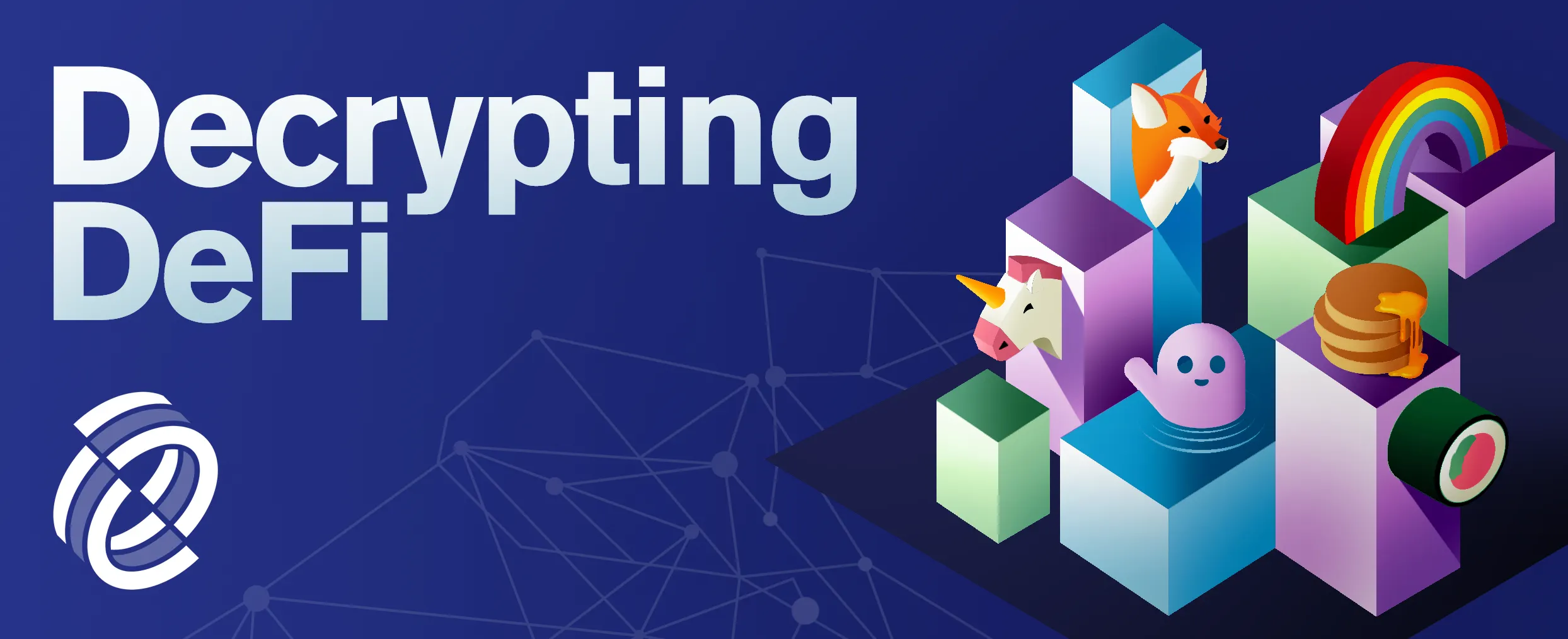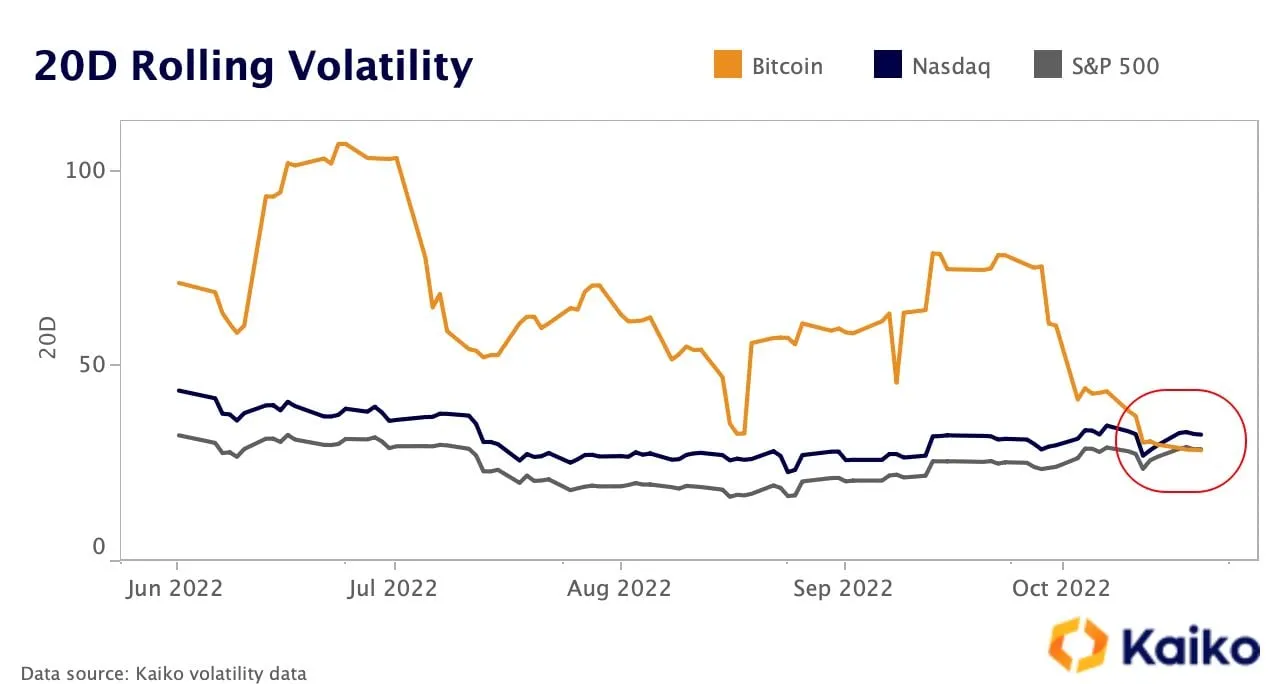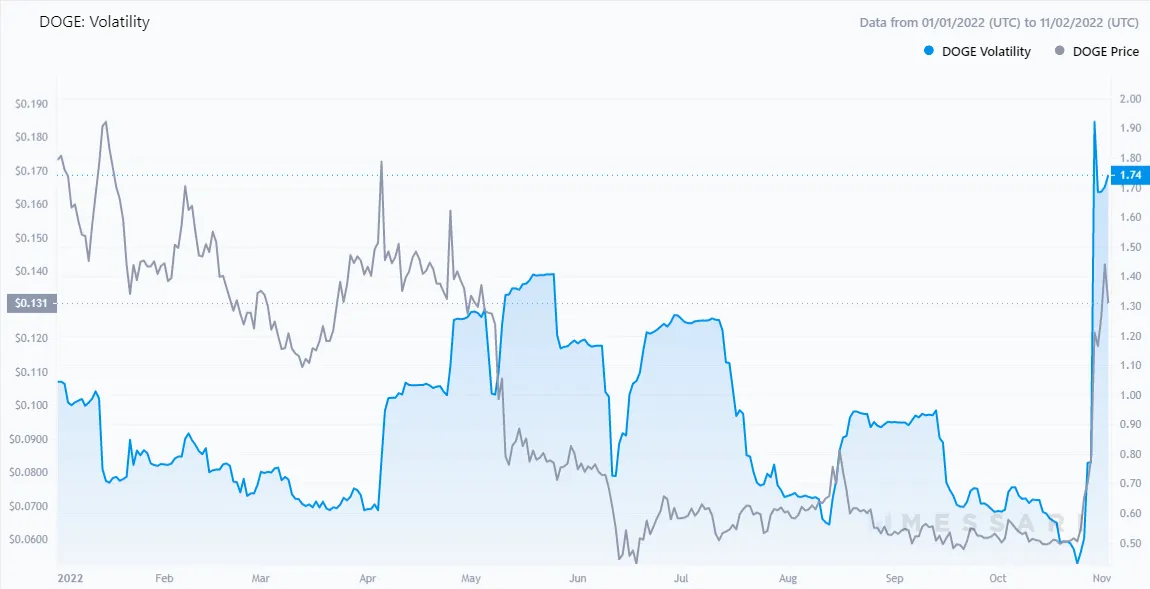
Are we in a dog market, crab market, or… Musk market?
It seems like the only way investors are making money these days is gambling on when Elon Musk will post his next DOGE-centric tweet.
Except for canine cryptocurrencies, the past several weeks have been horrifyingly boring in terms of price action. For the first time since 2020, Bitcoin’s 20-day volatility dropped below the S&P 500 and the Nasdaq.

In sheer price terms, the leading cryptocurrency has traded roughly between $18,800 and $20,800. This sideways trading, or what some call a “crab market,” has made crypto markets—normally a place of dramatic sudden swings— one of the more boring assets in finance.
Conversely, Dogecoin’s volatility has shot through the roof. The last time this specific metric was as high as it is now was all the way back in July 2021, according to Messari.

So, what’s a degen to do? How do you make a quick buck these days? Some are turning to structured options products.
Options are contracts that offer traders the option, but not the obligation, to buy (call option) or sell (put option) an asset at a specific price at a specific date. Think the price of orange juice is going to drop this winter? You can buy some put options which will give you the right to lock in a higher price now should orange juice prices drop later on and flip a profit.
There’s also a wide and varied market for both buyers and sellers of put and call options. Some people, like Warren Buffet, make their money purely on selling options, and might not have any actual interest in the underlying asset’s price action.
Despite the high rewards, these strategies can still be super complicated and time-consuming to maintain (even in a crab market). But several options projects in the space, including Rysk Finance and Ribbon Finance, are now bundling these strategies into simple set-and-forget vaults.
Squeeths and straddles
Opyn, upon which Rysk and Ribbon are both built, quite literally offers a “Crab Strategy” that uses one-click options strategies for boring markets like today’s. It is indeed a one-click strategy, but there’s a lot happening under the hood. Here’s how it works.
Users can deposit either USD or ETH into the smart contract. As soon as they do so, the contract sets up a short “Squeeth” position and long Ethereum position. Squeeth is a proprietary index designed by Opyn and others that tracks Ethereum’s change in price and squares it.
"The strategy aims to be market neutral, meaning that the ETH exposure from the Long ETH portion of crab is canceled out by the Short Squeeth exposure," Opyn's community lead Wade Prospere told Decrypt on Twitter. "The financial term is delta neutral."
By pairing these two options positions together, Opyn has essentially created what is called a “straddle” and is neither long nor short.
A straddle is when a trader buys a put and a call option for the same asset at the same time. Because you’re using options, this strategy still yields a return from the funding rate to maintain a short position despite the underlying asset essentially moving sideways. Funding rate is an incentive that can help keep the price of derivatives contracts in line with the price of the underlying asset.
When the rate is positive, and the derivative is trading above the price of the underlying, then the long positions will pay that rate to short positions. When it’s negative, users with short positions will pay that rate to longs. The payout from a funding rate for an open position is called premium yield.
Thus, the straddle strategy earns a premium yield because it is short volatility and this position will continue to earn so long as the market remains… non-volatile.
This strategy would continue to rake in that yield for crabby investors so long as ETH does not move (in either direction) more than 4.8% within the next two days.

In the case of volatility, however, the strategy can still be enticing for some investors. That's because even if the price of Ethereum does drop, the strategy will continue to accumulate more ETH to maintain its delta-neutral position, said Prospere.
"A good mental model is thinking of it as an [liquidity provider] LP position," he said. "As ETH drops, the strategy accumulates more ETH to remain market neutral (delta neutral). As ETH increases, the strategy reduces its ETH holdings (sells ETH for Squeeth) to remain market neutral."
In the case of a bullish outbreak, which is something ETH enjoyed at the end of last month, then the strategy doesn't perform quite as well. In a Twitter thread, Prospere explained that even though ETH holders had been up more than 20% over that week, Crab strategists only enjoyed a 13% increase.
"One big takeaway is that crab can still perform relatively well over a longer period of time despite short-term volatile moves (mainly due to the rebalances)," he told Decrypt. "Obviously hurts to see the unrealized gains go lower, but crab has still outperformed ETH since inception."
In dollar terms, the strategy has enjoyed an 11% return since its launch on July 28. In Ethereum terms, the strategy has yielded 16% returns.
Conversely, holding just ETH over the same period would mean that an investor would be down 4.27%.
Degens, beware: this investing approach is unique, complicated, and now, all of a sudden, it’s reduced to the click of a button thanks to DeFi. For now, it’s profitable. But the macro environment could change any day now.
Decrypting DeFi is our DeFi newsletter, led by this essay. Subscribers to our emails get to read the essay before it goes on the site. Subscribe here.

